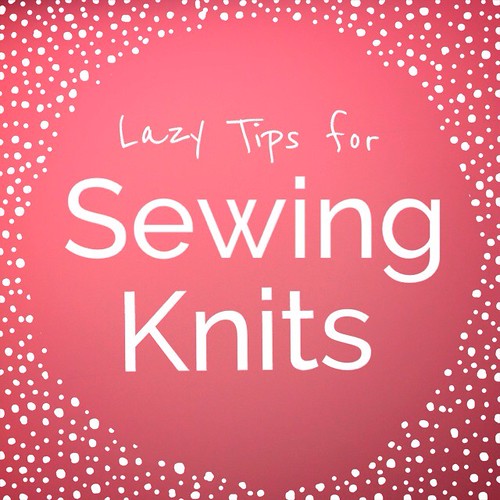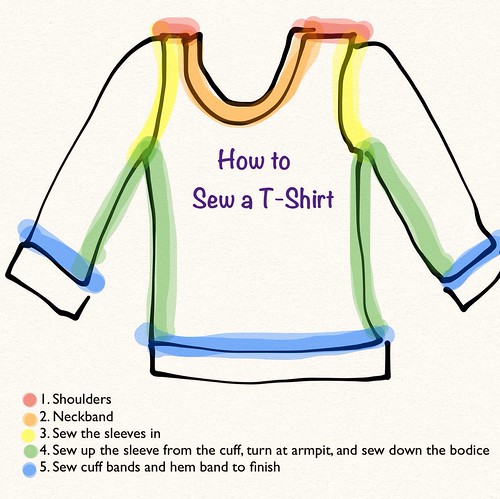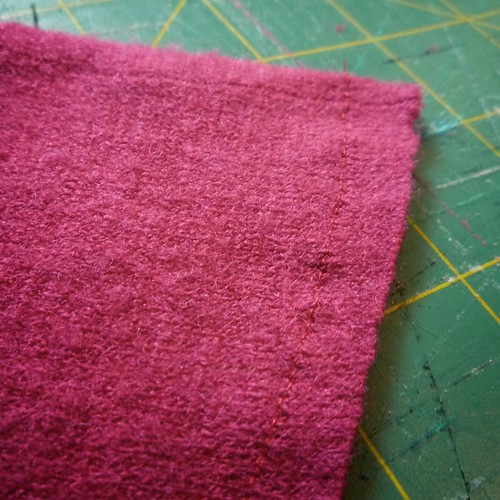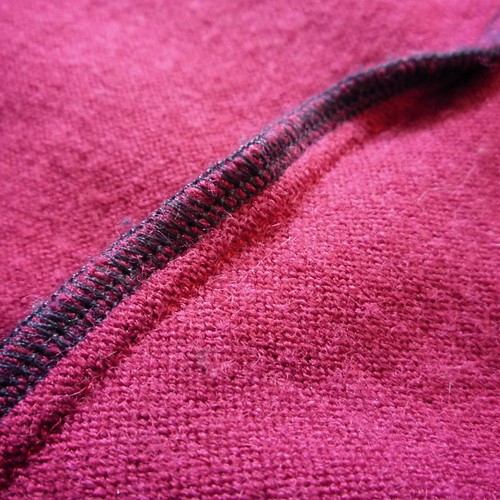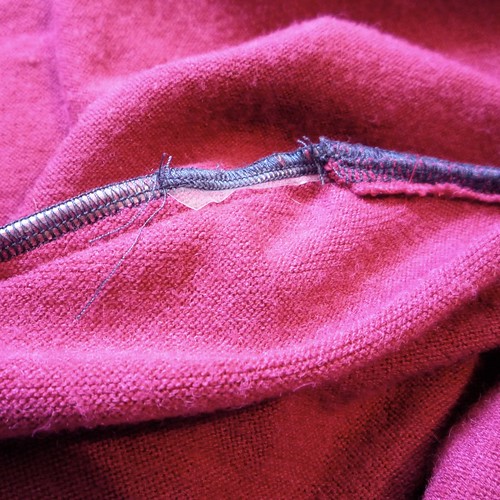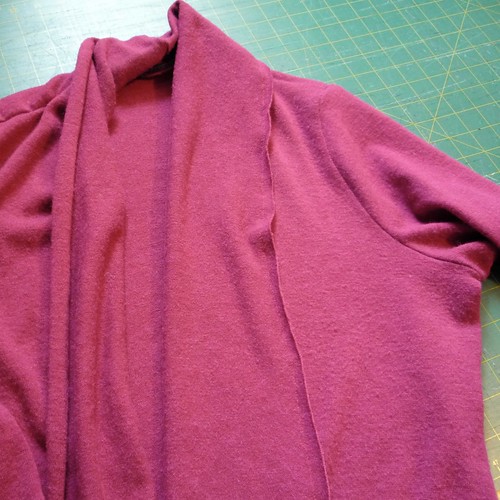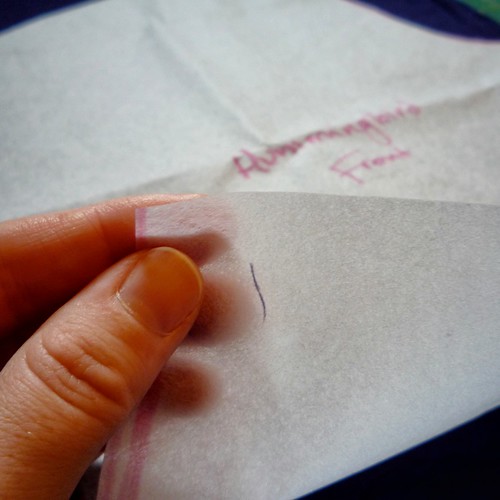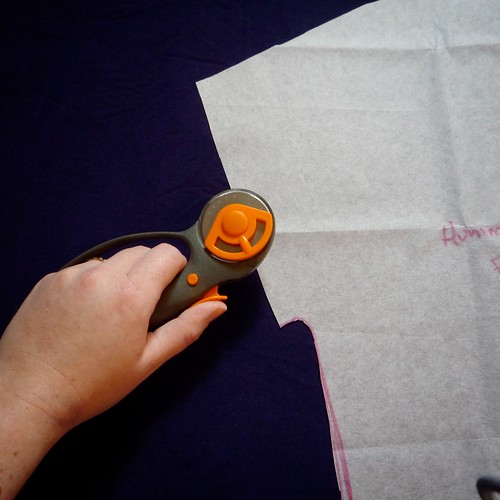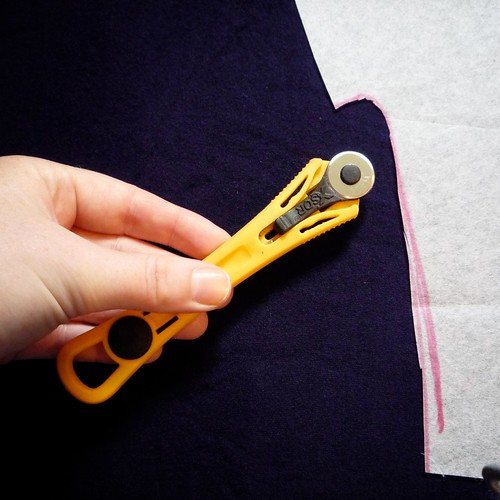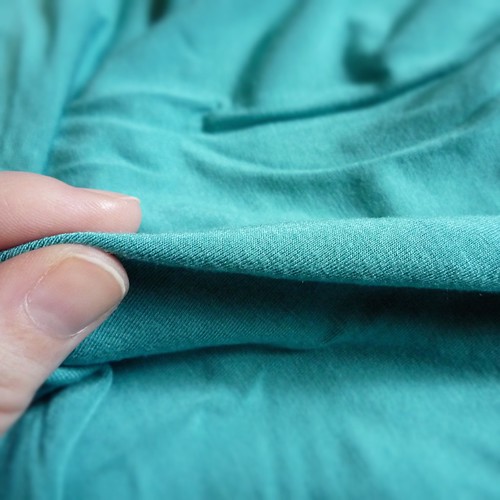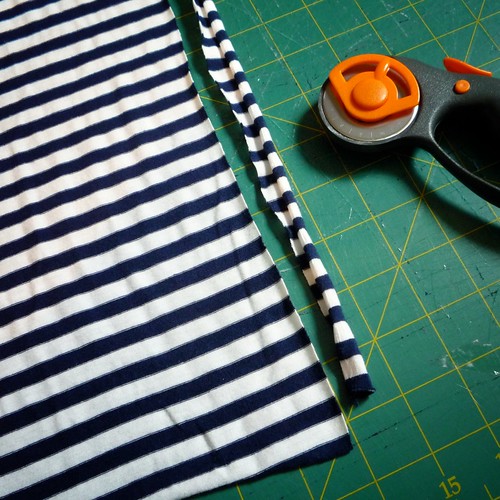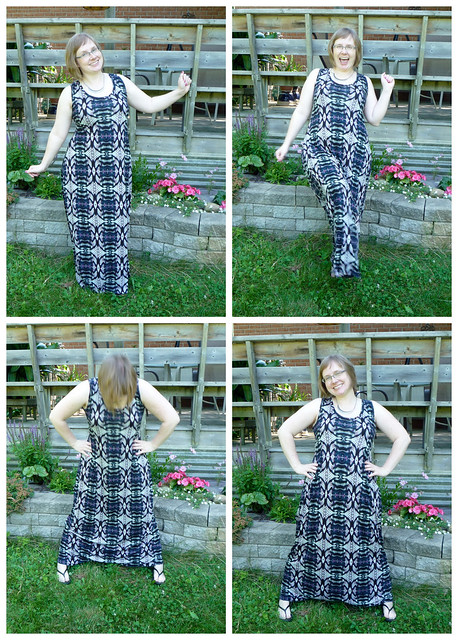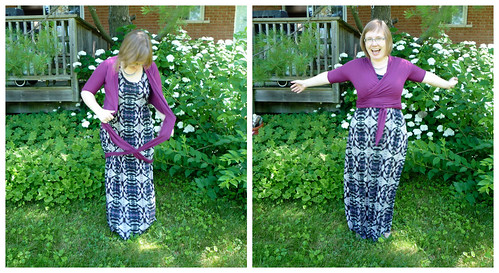About a week ago I posted some sketched plans for a fall wardrobe…

…mostly black, white and coral…

…with some possibilities in other colours!

Well, was the last week of vacation, and I sewed up a storm. I’m done, baby!
I spent yesterday hanging out with my sister, who was kind enough to take pics for me. I got a little giddy taking pictures in someone else’s back yard for once - as you’ll see!

First up:
White Renfrew Tank: Leftovers from my first-ever knit project!
Floral Long-Sleeved Renfrew: I can’t wait to wear this in cooler weather! (Yesterday was HOT!) The fabric was a gift from Sally at the Quirky Peach. Thank you, Sally! I love it!
Coral Stretchy Jeans: Hmmm. I love the colour, but I’m not sold on the fit! I added an inch of width to the pattern I always use, since they usually come out pretty skin tight… but now they look and feel a big baggy to me! I’m considering taking them in from the knee down.Also, you can tell in the pocket picture that this thin denim doesn’t hide ANYTHING! I can’t find any denim locally that is as heavy as the stretch denim in my RTW pants.
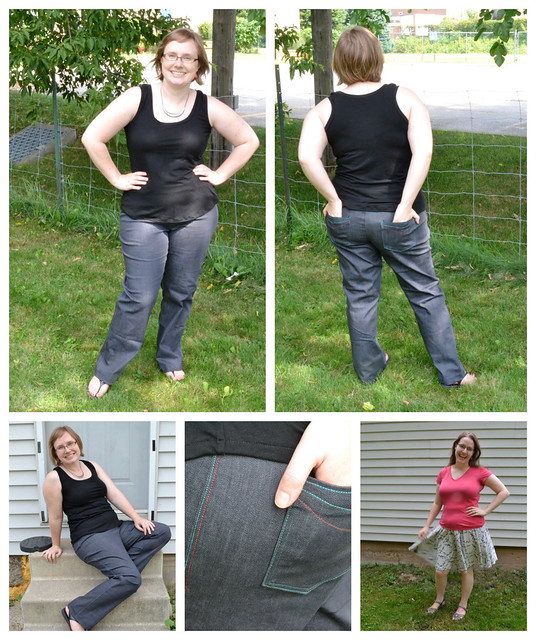 Next up:
Next up:
Grey Stretchy Jeans: I had FUN on these! I’ve always avoided contrast stitching, but I went for it on these. Had to make them fun and colourful somehow! I used regular thread and a triple stitch in both red and turquoise. Again, they feel a bit baggy. The fabric is a lovely stretch denim from Gorgeous Fabrics, bought with a gift certificate from my sister for my birthday. (Speaking of which, look how she just happened to match my wardrobe! She’s even wearing a me-made Palova knit circle skirt!)
Black Mission Maxi Tank: I’ve used this pattern for 3 dresses and about 5 tanks this summer - it’s a winner! I made this one from a metre of amazing black bamboo knit that Anne gave my years ago to wear as a scarf/shawl sort of thing. I wish our local shop still sold fabric this nice!

Stretch Pencil Skirt: I”m wearing this right now, and it’s SO COMFY! It’s a heavy, seriously stretchy twill that I bought from the remnant bins last year. The pattern is based on the Cake Hummingbird skirt, including my adjustment for a big booty. I didn’t want to have panels cutting up the print on the front, so I traced a version with darts instead. As you can see below, I just sewed a piece of wide black elastic on was the waistband. No zip needed!

Pink Leggings: I wear skirts with leggings a lot, since I sit/crawl/dance/etc in my work day. I had just enough pink spandex cotton blend to make some short leggings. I use the Style Arc Laura Leggings pattern, and it works great! Just a single seam on each leg and some lazily applied elastic at the waist. 
Sharpie Skirt: My favourite! I got the black and white polka dot heavy cotton at Ikea, and used the same Hummingbird hack pattern as above. This one isn’t stretch though, so I may have over compensated with ease! It sits lower than I usually prefer, and is quite loose around the hips. On the other hand, I can sit comfortably and there’s definitely room for heavy fleece tights underneath!

As planned, I made the plain skirt first then coloured in random circles with Sharpie. I still haven’t washed it, but I’m hopeful that it won’t fade TOO badly! If it does, I’ll just colour it in again! I’m looking forward to wearing it with bright cardigans in the winter.
And that’s that! 2 skirts, 2 tanks, a tee, and 2 pairs of jeans. I like the combination of basics and graphic prints, and the slight twist on my usual colours. Everything will fit into my wardrobe easily and get worn often.
Even better, the sewing process was totally relaxing and zen, since it was all TNT patterns. That’s my kind of sewing!
Now that I’ve depleted my stash of stretch denim, can anyone suggest a good place to buy some online? I’m looking for medium-to-heavy stretch denim or twill, preferably in bright colours? Thanks!
p.s. Some people have let me know they they are having trouble leaving comments recently… If that happens, could you contact Discus? They say everything is ok on my end, but clearly something is going on… Thanks!

